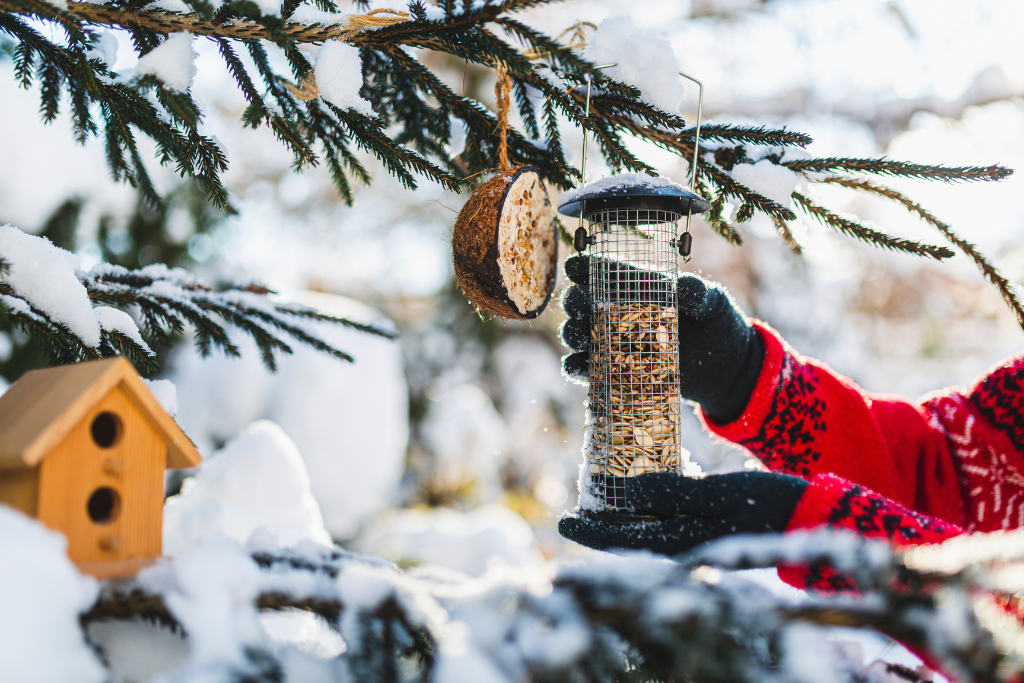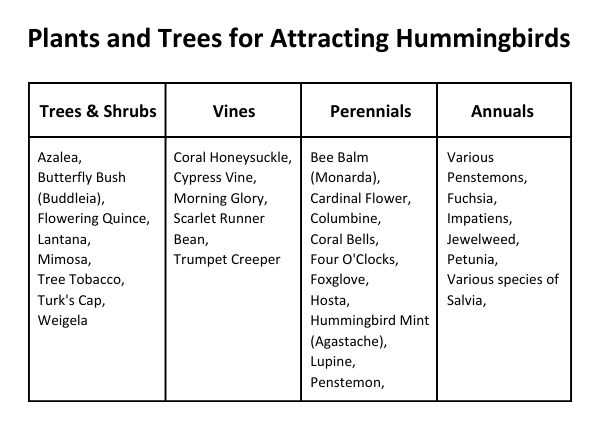
Prepare Birds for Winter
27 November 2025 +As winter settles in, the vibrant colors of Blue Jays, Red-Breasted Nuthatches, and Northern Cardinals bring life to an otherwise dull landscape. But with snow ...

There’s something magical about watching hummingbirds dart through your garden. Whether you’re hoping to catch a glimpse or create a hummingbird haven, it’s easier than you might think to bring these amazing birds into your yard.
With the right combination of food, shelter, water, and thoughtful planting, you can turn your outdoor space into a hummingbird paradise. Here’s how to get started:
Nectar feeders are one of the quickest and most effective ways to attract hummingbirds, especially if you already have some near you yard. You can purchase a ready-made nectar mix, or easily make your own by combining 1 part white sugar with 4 parts water. Boil the water, add the sugar, stir until dissolved, and cool completely before filling your feeder. Store any leftovers in the fridge for up to four weeks.
Important Tips:
There are two main types of hummingbird feeders:
Whichever you choose, make sure it’s easy to clean and refill. Simpler designs with fewer nooks and crannies are ideal, as sugar water can ferment and grow harmful bacteria if not maintained properly. Clean feeders every 2–3 days (daily in hot weather) with hot water and a brush—avoid soap or rinse thoroughly if used.
Location matters when placing your feeder:
Hummingbirds love a gentle mist or small puddles for bathing. Here are a few ideas:
Try running a misting spray at the same time every day for about 20 minutes—hummingbirds will start to show up right on schedule.
Shelter is essential for protecting hummingbirds from the elements and predators. You can offer shelter by planting a mix of evergreens and deciduous trees. Native plants are best—think spruce, pine, oak, maple, and birch.
When it comes to nesting, hummingbirds are particular. They usually build tiny, cup-shaped nests at the tip of branches, often over water. They use soft plant down (from milkweed, cattail, or thistle), animal hair, and spiderwebs for construction.
To support nesting:
The best long-term strategy for attracting hummingbirds is to grow a garden full of their favorite flowers. Not only will it support the birds, but it will also beautify your yard. Choose a mix of bright, tubular flowers such as bee balm, columbine, salvia, and trumpet vine.

With just a bit of planning, you can transform your yard into a hummingbird-friendly sanctuary. Provide food, water, shelter, and nesting materials—and be patient. Once hummingbirds discover your space, they’re likely to return year after year.
Have you spotted a hummingbird in your garden yet?